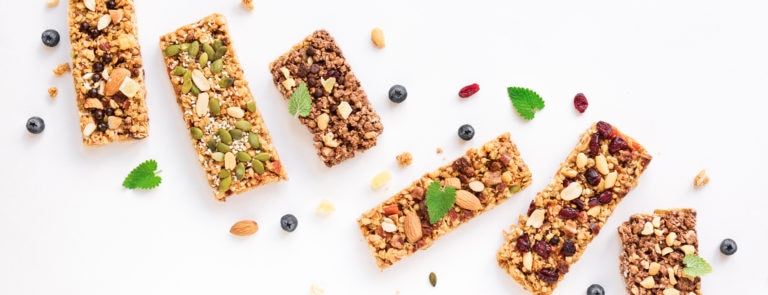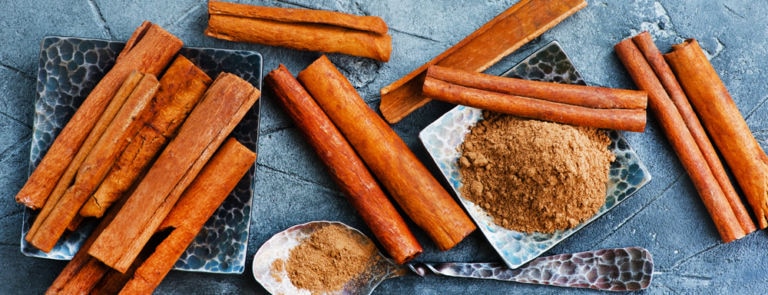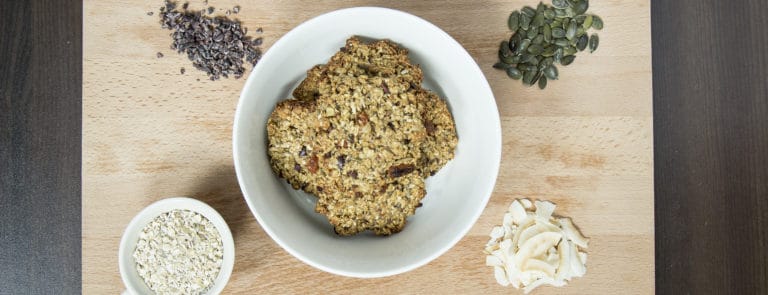10% off £35
Code:SAVE
Going nut free – tips to help you live without nuts

If you’re one of the growing numbers of people in the UK with a nut allergy, navigating a nut-free world can seem like a challenge. Our guide on how to live nut-free should come in handy.
Approximately 1 in 50 children in the UK are allergic to nuts, making it the most common type of food allergy.1,2 Despite its prevalence, having a tree nut or peanut allergy can make everyday activities like going out to eat and travelling much more difficult.
While peanuts and tree nuts are included in the list of top 14 major food allergens, and are therefore required by law to be highlighted in ingredients lists and menus in the UK, cross-contamination, confusing labels and lack of awareness all pose a real threat to nut allergy sufferers.
Touching, eating or, in some cases, even breathing in a tiny amount can cause a potentially fatal reaction for some people. So, if you or someone that you care about has an allergy, it is important to be aware of the not-so-obvious sources of nuts that exist.3
In this guide, we will explore what it means to live with a nut allergy. This includes the difference between an allergy and an intolerance, different types of nuts and nut allergies to be aware of and, crucially, the steps you can take to stay safe and nut-free if you need to.
What is a nut allergy?
A nut allergy is when your body's defence system reacts to certain (or all) types of nuts, which can cause different levels of symptoms. These can range from mild to very severe and even life-threatening for some people.
While we're not exactly sure why some people develop allergies and others don’t, it’s clear that certain foods, like nuts, are more likely to cause allergic reactions than others.3
In severe cases, a nut allergy can lead to anaphylaxis - a life-threatening allergic reaction that requires immediate medical treatment, often with an adrenaline auto-injector.4


What is the difference between a nut allergy and a nut intolerance?
A food intolerance is an adverse reaction caused by the consumption of certain foods, such as nuts.
If you have a nut intolerance, this means your body has trouble digesting nuts properly. Common uncomfortable symptoms of food intolerances can include anything from bloating and tummy pain to skin issues and joint pain.5
While food allergies can be fatal, food intolerances are not typically considered life-threatening but can still have a significant impact on a person's well-being, work, and social life.
Unlike an allergy, a food intolerance does’t involve the immune system, so it can take anywhere from hours to days for symptoms to appear.6
Because of this, diagnosing a nut intolerance can be challenging and time-consuming. Often, keeping a detailed food and symptoms diary is the best way to pinpoint which foods you are reacting to.7
000000If you suspect that you might have an intolerance to nuts, it's always a good idea to speak with a healthcare professional. They can provide a proper diagnosis and offer valuable guidance on how to effectively manage your intolerance.
Signs and symptoms of a nut allergy
Peanut and tree nut allergies can cause symptoms that appear quickly, usually within minutes of eating the allergenic food. Mild to moderate symptoms may include:8
- A raised red rash (hives)
- Tingling or itchiness in the mouth
- Swelling of the lips, face, or eyes
- Stomach pain or vomiting
If you experience any of the above symptoms after eating tree nuts or peanuts, seek medical advice as the severity of future reactions is not predictable.
More serious symptoms, known as the ABC symptoms, can include:9
- Airway: swelling in the throat, tongue, or upper airways, making it difficult to breathe or swallow
- Breathing: sudden wheezing, difficulty breathing, or noisy breathing
- Circulation: dizziness, faintness, confusion, or loss of consciousness, along with pale and clammy skin
This type of severe allergic reaction is called anaphylaxis. An allergic reaction is generally referred to as anaphylaxis when it involves difficulty breathing or it affects your heart rhythm/blood pressure. Any number of the ABC symptoms mentioned above may also be present.
It is crucial to seek immediate medical attention if anaphylaxis is suspected or if any of these severe symptoms occur. Even if the person having a reaction carries an auto-injector (such as an EpiPen, Emerade or Jext), an ambulance should always be called straight away and the inform the operator that it’s anaphylaxis.
What types of nut allergy are there?
Peanut
Did you know that peanuts are not actually nuts, but a member of the legume (bean) family? Although they’re not technically related, due to their similar protein structures, having a peanut allergy does increase your likelihood of developing a tree nut allergy by up to 40%.10
Peanut allergies tend to develop in early childhood, with around 2% of children (1 in 50) in the UK affected. If you’re allergic to peanuts as a child, the bad news is that this is usually a lifelong allergy, with only 20% of children outgrowing their allergy by the age of 10.11
Unlike other ‘nuts’, peanuts are sometimes referred to as ‘ground nuts’ because they grow in the ground rather than a tree.12
It’s important to know that peanuts can appear on packaging labels in a number of different ways including:
- Peanut
- Groundnut
- Monkey nut
- Arachis hypogaea
- Goober (US)
- Pindar (US)


Tree nut
‘Tree nuts’ are a type of seed from plants and grow on trees. Tree nuts are a common ingredient in a variety of foods and body care products, which is why it’s important that you stay vigilant and check the labels before you eat or use a product.
Manufacturers will often opt to use the Latin name on packaging so make sure you know what to look out for:
- Almonds (Prunus dulcis/ Prunus amara)
- Brazil nuts (Bertholletia excelsa)
- Cashews (Anacardium occidentale)
- Hazelnuts (Corylus rostrata)
- Macadamia nuts (Macadamia ternifolia)
- Pecans (Carya Illinoinensis)
- Pistachios (Pistacia vera)
- Walnuts (Juglans regia / nigra)
- Shea Nuts (Butyrospermum Parkii)


Misleading nut-named foods
While you need to be cautious when you are a nut allergy sufferer, there are a few foods that have the word ‘nut’ in their name that aren’t part of the tree nut family and therefore generally don’t need to be avoided:10 That said, it is possible to be allergic to any type of food, so if you are unsure or are feeling cautious, it’s always best to speak to a healthcare professional before trying any of the above.
- Coconut
- Nutmeg
- Butternut Squash
- Water Chestnuts
- Pine Nuts – pesto lovers unite! Pine nuts are edible seeds from pine trees, so people with nut allergies do not need to avoid them.
- Chestnuts – chestnut allergy is considered rare. They are classified in a different botanical category to tree nuts and peanuts.
Tips for daily life with a nut allergy
Check every label
Check food labels carefully, every time. Manufacturers sometimes change recipes and production methods, so check the ingredients – even if it’s something you’ve eaten hundreds of times before.
In the UK, potential allergens such as nuts must be highlighted in ingredients lists by law.10,13 The problem is you may not always think to check labels of products that wouldn’t obviously contain nuts. For example, ready-meals or jarred sauces may contain almond paste, nut extracts, peanut flour and nut oils. Milled nuts are often used to thicken marinades, sauces and soups.14
For many nut allergy sufferers, the dreaded ‘may contain traces’ warning, is important to pay attention to. Whilst manufacturers may take many precautions to avoid cross contamination, if a product is made in an environment that also handles nut products, there’s a chance that nut traces may make their way into your item. These are expected to be declared as such on the labels upon robust risk analysis assessment and significant risk is identified. So always check labels.
Avoid cross-contamination
Cross-contamination can occur if foods containing nuts are prepared in the same area or with the same utensils as those without nuts.
This goes for factories and restaurants, but also home kitchens. For example, if a wooden spoon was used to stir a mix which had previously been used for peanut butter, this could be enough to trigger a reaction.
Aside from FSA guidance, precautionary ‘may contain’ and ‘made in a factory’ declarations on packaging can be useful, it’ is worth noting that there’s currently no law that specifies if and when these statements should be used on a food product.15,16
To avoid ingesting nuts, the safest option is to only use clearly labelled free-from food from a trusted retailer.


These will have been made in a nut-free controlled factory/areas, where the machinery and preparation areas aren’t also used for making nut-based products.
It’s also a good idea to wear an allergy bracelet and carry an auto-injector pen, if you have been given one.
Communicate your allergy
- Flying: If you are going on a plane, make sure you inform your airline about your allergy before you fly. If you have an airborne allergy, ensure that you have you communicated this with the cabin crew on your flight. If you are served something and you are unsure whether it is safe to consume, ask to see the ingredients list.
- At restaurants: Before you order food, make sure your server is aware of your allergy. Many restaurants now have an alternative allergen menu, which allows you to see every allergen in every dish.
- In cafes: Recent changes to legislation mean that food business operators are now required by law to provide allergen information to consumers on both prepacked and non-packaged food and drink.17 While this is a significant improvement for allergy sufferers, it doesn’t necessarily limit the risk of cross-contamination. Always make staff aware of your allergy and ask if any of the products on display contain any allergens. Even if the item you’d like to order is ‘safe’, if any other items on display contain nuts, it is best to avoid them altogether.
- If you don’t speak the language: If you are on holiday and find yourself in a country where their first language is not English, a bit of preparation will be necessary. Try to learn how to say some basic phrases like “I have a nut allergy”, “does this contain nuts?” and “may contain nuts”. Another, safer,) option is to take translated cards in the local language explaining your allergy – you can make your own or purchase official translation cards from the charity AllergyUK.18
- To friends, school, team, colleagues and your workplace: Whilst it may seem like common sense, many people will simply forget to tell people about their allergy until they’re put in an awkward situation. While your allergy doesn’t define you, it is really important that everyone around you knows about it.
If you carry one, make sure every person you surround yourself with is educated on how to administer your auto-injector - it could save your life.
Plan ahead for eating out
More and more restaurants and cafes understand the need to cater to customer’s allergies, but you must still be always on guard when eating out.19
As recent as 2017, a research study found that 1 in 10 restaurant managers incorrectly believed that a person allergic to a specific food ingredient can safely eat small amounts of that food.19
Another study carried out in Germany in 2019 discovered that 18% of restaurant employees couldn’t name even one food allergen.20
Here are some tips for planning a meal out:
- Research restaurants in the local area and look to see if they have a special allergy menu
- Ask questions – do they understand the consequences if you are exposed to nuts?
- Do they serve any dishes that contain tree nuts or peanuts?
- Have staff been trained in allergies?
- Can they guarantee that clean, stainless steel cooking utensils are used (no wooden chopping boards or spoons)?
- If in doubt, eat elsewhere.
If you are feeling a little adventurous, your allergy shouldn’t stop you from exploring a whole world of flavours, but just be mindful of cuisines that commonly use tree nuts, peanuts and nut oils in their dishes:9


- Thai – many foods are cooked in peanut oil and popular dishes like Pad Thai use crushed peanuts as a garnish.
- Chinese – peanut and cashew are a popular addition to many recipes, and peanut oil is used for most dishes.
- Indian – korma, tikka masala and pasanda commonly use ground-up nuts and nut oil in their sauces, and breads often include almonds.
- Indonesian – many popular dishes like chicken satay, gado gado, lumpia contain nuts.
- Vietnamese – peanuts and cashews are common in sauces and as a garnish.
- Mexican – common dishes like mole and picadillo contain nuts, desserts commonly use pecans.
- Middle Eastern – toasted almonds are a common garnish, milled nuts are often used to thicken sauces and most sweets contain nuts.
Beware of meat substitutes
They’re innovative and delicious ways of eating meat-free, but you should be wary of mock-meat ingredients as they often include protein-rich nuts (such as walnuts and pecans)
Watch out for veggie burgers, vegan chilli, vegan cheese, cutlets and hydrolysed plant protein as they often contain ground-up nuts.
Watch out for unlikely nut sources
Although it seems like an unlikely source, both wet and dry pet food, as well as pet treats and bones, sometimes contain traces of nuts.21
Garden compost and mulch also commonly include peanut shells. Check with the manufacturer to be on the safe side.
Medicines and beauty products
Body lotions may contain shea nut butter, while shampoos, conditioners and other creams could contain macadamia, almond or argan oil.
Some vitamins, ear drops, nappy rash creams and eye pencils contain peanut oil, so check ingredients lists (it may be listed under its Latin name, Arachis Hypogaea).10
Summary
- Even nut traces can trigger a serious allergic reaction
- Research is required before trying any new foods
- It’s safest to stick with restaurants and brands of nut-free foods you know and trust
- Nuts can be found in everyday items like pet food and toiletries
The final say
- Allergic reactions can range from mild to life-threatening but should always be taken extremely seriously.
- If you experience any symptoms of an allergic reaction or anaphylaxis, seek medical attention immediately.
- Food labelling can be tricky to decipher with multiple names for the same nut. When in doubt, stick with a dedicated free-from brand.
- Whether you are allergic to just tree nuts, peanuts or all nuts, a nut allergy can have a huge impact on your life, but it doesn’t have to hold you back from trying new things.
- Make sure you communicate your allergy to everyone that needs to know, from airlines to colleagues.
- If you are unsure about something, ask the question - no one will think of you negatively for trying to stay safe.
The advice in this article is for information only and should not
replace medical care.
Related Articles
Shop by wellness goal
Sign up for exclusive offers
Plus, get expert advice to support your health & wellness straight to your inbox when you sign up to Holland & Barrett emails.
Read our
privacy policy














